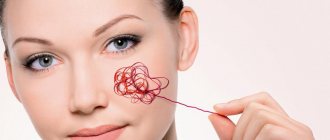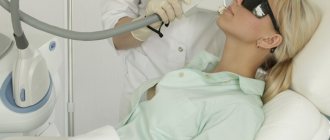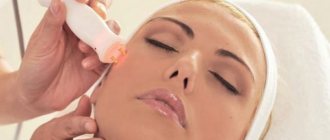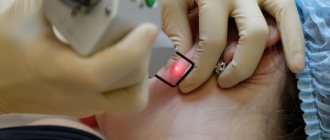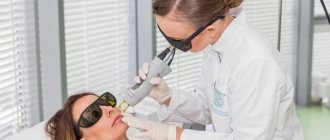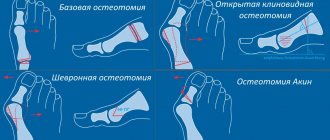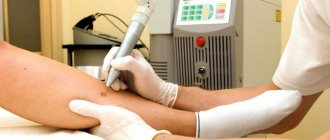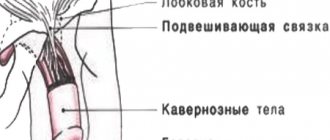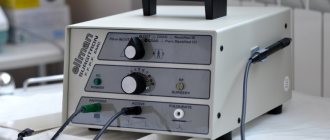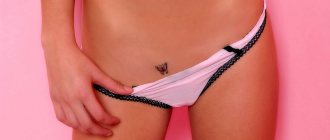Couperosis on the face: what is it?
Couperosis (small spider veins on the face) is a disease that appears due to impaired blood microcirculation. This condition occurs when small blood vessels in the skin dilate and become excessively brittle. Most often, this problem is observed on sensitive skin, because it is most susceptible to external irritants and reacts to them with inflammation and redness. Harbingers of rosacea are itching, tingling and burning of the skin, which occurs when there is a temperature change, touching, or washing.
Couperosis on the face (what it is was described above) is most often observed in the forehead and cheeks, in the chin area and on the nose. It manifests itself as redness on the face and a network of dilated capillaries. This skin defect does not cause physical discomfort to its owner, but causes aesthetic discomfort. After all, if rosacea is not treated, it will progress and become noticeable. It can develop into a disease such as rosacea.
Many cosmetologists believe that rosacea occurs more often in people who have a hereditary predisposition to this disease. To reduce the likelihood of this defect occurring, you need to avoid the influence of factors that cause disruption of blood flow and provoke stagnation of blood in the veins. The causes of rosacea include:
- Temperature difference. It has a negative effect on sensitive skin, so this type of dermis must be protected from excessively cold or hot environmental influences.
- Food. Both spicy and hot negatively affect the condition of the skin.
- Smoking. This habit negatively affects the condition of the entire body as a whole and the functioning of the circulatory system in particular. Very often provokes the appearance of rosacea.
- Alcohol. It has a vasodilating effect, which has a bad effect on the condition of the epidermis.
- Ultra-violet rays. They make blood vessels more fragile. Because of this, you need to be careful about prolonged exposure to the sun.
- Coffee and hot chocolate. Stimulates blood circulation in blood vessels. Frequent use causes spider veins to appear on the face.
- Stress. It increases pressure, which disrupts the stable functioning of blood vessels and destroys the walls of capillaries.
Cuperosis is a disease that requires certain treatment. If this pathology is not treated, the skin will age faster, because it will lose a large amount of nutrients. Stops receiving the required amount of oxygen. It will become pale and acquire a grayish tint. Removing blood vessels on the face with a laser will help solve this problem. Reviews about this procedure are mostly positive. Women say that it helps get rid of rosacea in a fairly short time and does not cause negative reactions in the body.
Causes of rosacea
Those with light and thin skin are prone to rosacea. Most often, spider veins appear on the cheeks, in the eye area and the wings of the nose. The defect is one of the signs of disruption of the circulatory system.
The main reasons for its formation in adults include:
- deviation of hormone levels;
- hereditary predisposition;
- tanning abuse;
- abnormalities in the functioning of the vascular system;
- exposure to sudden climate changes;
- skin damage;
- nicotine or alcohol addiction.
The reasons for a child can be quite serious. In this case, you should definitely take your child to a pediatrician. The appearance of spider veins in childhood indicates internal disorders. A comprehensive examination by a specialist is necessary.
! Poor nutrition increases the likelihood of developing rosacea on the face.
Treatment of spider veins on the face
Many women think about how to remove spider veins on their face. If the disease is at an early stage of development, it can be combated with the help of creams and masks. Their action is aimed at strengthening the walls of blood vessels, toning and nutrition. External agents can remove rosacea, but not completely, but only for a short period of time.
Cosmetologists are currently fighting this disease using modern methods that destroy blood vessels. The procedures do not disrupt blood circulation in the vessels, since when injured capillaries are lost, reserve capillaries are activated. Laser cosmetology centers and beauty salons use the following methods to treat this disease:
- Electrocoagulation. The essence of the procedure is the destruction of the affected vessel, which occurs under the influence of an electrical impulse passing through a very thin needle. Despite the simplicity of the procedure, when treating a large area affected by rosacea, very unsightly needle marks remain on the face. A more gentle type of electrocoagulation is diathermocoagulation. It is carried out using a hair electrode. This treatment method is used no more than once every seven days. First, large and then small vessels on the face are removed. In rare cases, pigment spots and scars appear after the procedure.
- Laser therapy. Treatment is carried out with a laser and only for advanced rosacea. Reviews about the procedure for removing blood vessels on the face with a laser are mostly positive. People say that, despite the fact that this procedure is painful, it gives a good result and helps to remove rosacea for a long time.
- Phototherapy. This method is widely used in cosmetology practice to treat rosacea. During a cosmetic session, the skin is exposed to special pulsed light, the range of which ranges from ultraviolet to infrared radiation. This procedure is good because each type of ray affects a separate problem.
- Ozone therapy. A special oxygen-ozone solution is injected through a microscopic needle. It improves cell functioning and charges them with energy and strength. This approach allows you to remove defects from the face. Is the safest method. After the procedure there are no scars, scars or pigmentation.
Regardless of which method was used to treat rosacea, the results obtained should be maintained with proper skin care. You need to take vitamin C or ascorutin regularly. Use special creams. And most importantly, the main cause of rosacea should be removed.
Since the laser method of removing spider veins on the face is the most common, this is what will be discussed further in the article.
Benefits of laser treatment for vascular changes
- The laser works specifically with dilated vessels, healthy vessels are not affected;
- The effect on the dilated capillary is quick and painless;
- No scars or burns - the device does not injure tissue;
- The first procedure gives a visible result, and after completing a course of procedures you can completely get rid of visible capillaries;
- There is no recovery period - after the session you can go about your business. Full recovery takes up to two weeks. This time is as comfortable as possible, and no special skin care is required.
For some patients, one session is enough - when the vessels are very thin. In case of severe rosacea, a course is prescribed.
Removal of blood vessels with laser: indications and contraindications
Many women are concerned about the question of how to remove spider veins on the face. This problem can be solved with laser therapy. Indications for the procedure are:
- Spider veins on the skin. This deficiency occurs when capillary vessels dilate.
- Single dilated vessel. The defect is a vessel that is dilated along its entire length. Because of this, a mark resembling a dash is formed on the skin.
- Vascular network on the face. Occurs after peripheral lesions of blood vessels that are located in one area. Most often, this defect forms on the wings of the nose.
- Rosacea. An inflammatory process that occurs in the deep layers of the skin. With this pathology, rosacea and small papules filled with serous fluid are formed. With this disease, the face becomes pink, and with the development of the pathology it acquires a purple hue.
This procedure also allows you to remove various benign vascular formations.
Laser therapy is not suitable for everyone, so you should consult your doctor before undergoing this procedure. Laser removal of spider veins on the face has the following contraindications:
- oncological formations;
- diabetes;
- arterial hypertension;
- thyrotoxicosis;
- diseases of the cardiovascular system;
- diseases accompanied by circulatory disorders, blood clotting;
- tendency to bleed.
- systemic lupus erythematosus;
- diffuse connective tissue pathologies;
- tuberculosis;
- mental illness in a severe stage of development;
- fever, infectious diseases in the acute stage;
- pathologies of the skin located in the area of the operation;
- period of bearing a child;
- lactation;
- epilepsy;
- predisposition to the formation of rough (keloid) scars.
In all of the above cases, you need to abandon laser therapy and choose another method for removing rosacea on the face.
Vessels on the wings of the nose: how to remove them forever
There are many methods described on the Internet to help remove blood vessels on the wings of the nose.
. In this article we will look at which procedures are really “tailored” to removing blood vessels, and which ones hit the entire area of the skin. Let's look at why the laser procedure may not work.
Causes of the appearance of blood vessels on the wings of the nose
Noticeable veins of red, purple or purple color on the nose are capillaries overflowing with blood. Their wall lost its tone and stopped resisting blood pressure. Now there is nothing to help her: collagen fibers cannot be implanted into the membrane of the vessel, and there are no muscle cells in it that could forcibly narrow the capillary.
The main reason why the capillary wall has lost its tone is genetic predisposition. A defect in the genes responsible for the production of collagen - and now the capillaries are already more brittle and fragile. They become overflowing with blood even without visible harmful effects on the skin of the face.
A genetic predisposition to capillary fragility is observed mainly in people with fair skin. But in dark-skinned people, the vessels on the wings of the nose can also expand. The reasons for this are:
- passion for tanning;
- love of spicy food;
- smoking;
- high blood pressure;
- work in conditions of temperature changes;
- frequent aggressive peelings and dermabrasion;
- hormonal imbalance;
- liver diseases.
If these factors affect a fair-skinned person, the blood vessels will
his
wings of the nose
become noticeable much earlier than nature intended. In addition, a complication such as rosacea may develop.
How to remove blood vessels on the nose
Remember that blood vessels (capillaries) do not have a muscle layer? This means that it will not be possible to restore their tone with the help of exercises, massage or exposure to contrasting temperatures. Neither traditional methods nor taking medications will work: even by increasing the production of collagen in the vessels as a whole, they will not be able to narrow the already dilated capillaries. Just like you can’t return a balloon once inflated to its original form.
The only way to get rid of blood vessels on the wings of the nose is to remove them. For this, clinics offer several procedures:
Electrocoagulation
It involves treating dilated vessels with electric current. As a result, the capillary walls heat up and “stick” to each other. Blood stops passing through the sealed vessel and turns into a “tourniquet” of connective tissue. Over time, such a cord dissolves.
When performing electrocoagulation, the exposure time is not controlled by the device. This means that there is a high probability of heating not only the vessel itself, but also the surrounding skin. This can lead to burns, as a result of which either small scars or age spots will appear on the wings of the nose.
Ozone therapy
In this procedure, the capillaries are punctured with a thin needle, and an oxygen-ozone mixture is injected into them. It should cause a surge of antioxidant protection and end with sealing the vessel. In fact, the capillaries on the wings of the nose are extremely difficult to puncture (rather, they can only be damaged by a needle). In addition, the introduction of ozone into the blood can activate the inflammatory response of the entire body.
Phototherapy
The procedure involves exposing blood vessels to light waves. They are absorbed by hemoglobin, which is found in red blood cells, and heat it up. Heat is transferred to the walls of blood vessels and glues them together.
In phototherapy, the skin is irradiated with light waves of different lengths. Some of them, the most dangerous, are blocked by filters, but the rest have a wide spread: from 550 to 1100 nm. They are absorbed not only by hemoglobin, but also by other chromophore pigments. This can cause various reactions: inflammation, burns, and the appearance of light spots.
In addition, light waves of different lengths penetrate to different depths. Considering that the device sends high-density energy (10 times higher than that of a laser), it is clear that most of it heats the tissue. This is quite painful, even with the anesthetic cream.
A stream of light rays of different wavelengths cannot be collected into a small spot. It is difficult to treat the wings of the nose with a large beam: the rays will fall on the cheeks, the back of the nose, and the nasolabial folds. All these areas will subsequently hurt. In addition, they will be red and swollen for a long time.
Laser treatment
Laser is the most effective method of combating blood vessels on the wings of the nose. But if you choose the “wrong” device, it will not work.
What types of laser radiation sources are there?
To remove blood vessels, so-called “green” lasers are used, the rays of which are in the green-yellow light range. This:
- Neodymium laser with a wavelength of 532 nm. It destroys blue blood vessels. In its “pure” form it is difficult to use on the face, since - in order to avoid burns and scars - you need to very carefully select the parameters.
- Dye laser (PDL) with a wavelength of 585-595 nm. This laser perfectly removes red blood vessels, but if the capillaries become visible in a person with dark skin, then after treatment with this laser, light spots may remain on it.
- Copper vapor laser. It emits radiation with a wavelength of either 511 or 578 nm. It can precisely treat dilated blood vessels, but only on light skin – phototypes I and II. In people with darker complexions, pigment spots, blisters, and many crusts may form after the procedure.
As you can see, the definition of “green” alone does not provide an understanding of what kind of device is used in the clinic to perform the procedure.
Is it really possible that laser, such a seemingly effective method, can only be used on people with fair skin and red capillaries? Or you will have to choose which is better: the vessels on the wings of the nose
or age spots?
A laser that removes any vessels on the wings of the nose
Cynosure has found a way out of the situation. A device that copes with both red and blue vessels is Cynergy. It is created on the basis of two lasers:
- on dyes;
- neodymium
They are combined with Multiplex technology, which avoids the disadvantages of each of them that are described in the last section. How does this happen?
The device sends pulses in turn: first from a PDL laser, then from a neodymium laser. The first of them converts hemoglobin into another form, resulting in the formation of microblood clots, and they absorb the energy of the neodymium laser 3-4 times stronger than if such radiation was sent in isolation. The interval between pulses is adjusted individually, depending on the depth of the vessel and the speed of blood flow in it.
Multiplex technology can significantly reduce energy density. This means that the procedure is painless - because the surrounding tissues do not heat up. The epidermis also remains intact, therefore, no burns occur. And redness and swelling of the skin after the procedure lasts only 2-3 days.
Want to erase dilated blood vessels from your nose? Sign up for the DELETE clinic, we work with the Cynergy laser!
Preparation for the procedure
As follows from the reviews, many women consider laser removal of facial vessels to be a good way to combat rosacea. They say that the procedure is painful, but the sensations are tolerable, and the result is visible immediately.
Laser therapy does not require special preparation. The only thing is that before the procedure, the cosmetologist asks you not to use peeling, not to go to the solarium, avoid prolonged exposure to the sun, and not to take vitamin A orally.
If thermal or chemical facial procedures have previously been performed, then the interval between them and laser exposure should be at least 14 days.
Laser coagulation is carried out in the autumn-winter period, and can be done in the spring. During this period, the risk of adverse reactions of the body is minimized. It is not recommended to resort to this procedure in the summer.
The mechanism of rosacea formation
It is worth knowing that rosacea is bursting red blood vessels on the face. Their thin walls cannot withstand the pressure inside, and the vessel ruptures. This is how an unsightly cosmetic defect is formed. Capillaries on the nose have various causes (given above), but additional provoking factors for their formation are:
- Too frequent use of salon cosmetic procedures. In this case, thin vessels cannot withstand mechanical stress on the skin. And, as you know, where it is thin, it breaks.
- Increased physical activity and overexertion. In particular, we are talking about strength training or hard physical backbreaking work.
- Frostbite on the face and sudden changes in temperature around.
Important: the risk group in this case includes people with hypertension (high blood pressure).
Description of the procedure
Many people suffering from rosacea are concerned about how to get rid of spider veins on the face. In this case, experts advise resorting to laser coagulation. This technique is based on the ability of human tissues and skin cells to absorb light rays. The laser beam affects different skin defects differently. In the treatment of rosacea, rays of yellow and green wavelengths are used.
Two types of lasers are used in the treatment of rosacea:
- Neodymium. Modern device. Universal. Can be used for various locations of dilated small vessels or capillary mesh. The device emits radiation evenly. Equipped with a cooling system that prevents burns on the dermis and reduces pain during the procedure. The result after its use is visible immediately.
- Diode. It is used in the presence of small dilated venous vessels. The effect after its use is not immediately visible. It will take more than one session to achieve results.
The procedure for removing rosacea on the face with a laser is carried out without anesthesia. Sometimes a numbing cream may be applied. Apply it half an hour before the session.
The patient lies down in a special chair. His eyes are protected by glasses. Healthy tissues are treated with a cooling spray. During the session, a cold stream of air is blown onto the patient, which is pumped by a pump. Next, the doctor begins to treat the affected area with a laser. The injured vessel is heated gradually. The vessel is considered sealed when its color turns purple and a blood clot appears on it. After this, the procedure is stopped.
The session lasts 15-30 minutes. During the procedure, the patient may feel a slight burning and tingling sensation. If necessary, laser therapy is repeated after a week.
What is this procedure?
One of the highly effective treatment procedures is electrocoagulation of vascular networks. Pathological vascular neoplasm is eliminated by cauterization or sealing of tissue altered by pathology. For these purposes, the use of high-frequency currents (direct or alternating) is implied.
The procedure is widely used not only in medicine, but also in cosmetology. Since it not only removes telangiectasia from the epidermis, but improves blood circulation and metabolism, which normalizes the condition of the skin.
Removal of vessels that have lost their elasticity by electrocoagulation has the following effects on the tissue:
- Biological.
During the procedure, simultaneous death of pathological tissue and stimulation of undamaged tissue occurs, followed by regeneration; - Physico-chemical.
Physico-chemical bonds that are responsible for the attraction of cells are destroyed; - Thermal.
Causes burns because living tissue is heated to a high temperature; - Electrodynamic.
Leads to a change in structure, i.e. rupture of cells and tissues under the action of steam generated by heating blood, interstitial and lymphatic fluid.
Expert opinion
Such a wide spectrum of action of electric current leads to the removal of blood from deformed capillaries and subsequent gluing of their walls. In this regard, such capillaries are excluded as a link from the microcirculatory bloodstream, and accordingly cease to participate in the blood flow. At the same time, the external condition of the skin takes on a healthy appearance - the vascular pattern disappears.
Vascular surgeon, phlebologist
Osipova Ekaterina Yakovlevna
Recovery after the procedure
After the laser procedure, redness occurs at the site of treatment of the skin. Patients say it goes away in 1-2 days. Cosmetologists recommend not to wet the treatment area for three days. After removing spider veins with a laser, the skin is cleansed with a chlorhexidine solution. This disinfects the surface of the skin and protects it from infection.
Immediately after laser therapy, ice is applied to the injured area. It is prohibited to use cosmetics during the day. Antibacterial ointment is applied for several days after using the laser. A ban on decorative cosmetics and alcohol-containing facial care products is being introduced for three days. It is not recommended to drink alcohol for three days. For two weeks you should refrain from active physical activity, exposure to the sun and visiting the pool. You should not use scrubs or peels for about 14 days.
After removal of rosacea, you cannot visit the bathhouse or sauna for 60 days. During this period, it is better to protect the skin from sudden temperature changes. You should regularly moisturize and nourish the skin with creams. They will soothe the irritated dermis and help it recover.
By adhering to the above recommendations, you can protect yourself from the development of side effects that are possible after the procedure.
Negative consequences of removing rosacea
How to get rid of spider veins on the face was described above. Most often, cosmetologists offer laser therapy to solve this problem. Negative consequences of laser removal of blood vessels on the face are not always observed. They appear in the form of redness and swelling. Sometimes crusts appear that must not be peeled off or wetted with water. To make them disappear faster, use ointments “Solcoseryl”, “Panthenol”, “Bepanten”. Very rarely, this procedure can cause a burn, hematoma, scarring or bruising. Most often, side effects go away within a few days and do not cause any particular problems.
After removing blood vessels on the face with a laser, the capillary mesh may appear again after some time. To prevent this from happening, you need to wipe your face only with a soft towel. It is also recommended to remove sweet, spicy and fatty foods from the diet, and limit the consumption of alcohol and coffee. From time to time you need to resort to salon procedures, the action of which is aimed at improving the functioning of capillaries.
To avoid rosacea, you should not choose scrubs and peels for dermis care that can injure the skin. It is necessary to reduce the time spent in the sun, and sunbathe only after applying products to the skin that reduce the negative effects of ultraviolet rays. Excess weight negatively affects the condition of blood vessels. It needs to be stabilized.
Possible complications and consequences
The likelihood that any complications will arise is minimal. However, in cases of non-compliance with recommendations during the rehabilitation period, low qualifications of the doctor or individual intolerance to the laser, some complications may arise.
They may be as follows:
- Swelling . High-temperature laser exposure to the skin may cause minor swelling. In this case, you should not be afraid; you can deal with this consequence yourself. To do this, it is recommended to drink an antihistamine and apply cold to the problem area. In order not to chill the facial nerves, a cooled compress is applied for 15-20 seconds.
- Hematomas. When treating large vessels, small bruises may remain on the face. To eliminate them, you should also apply cold to the site of the bruise and use heparin ointment.
- Sucrose crust. Within 3-4 days, this crust will fall off on its own. Under no circumstances is it recommended to remove or rub it, as this may lead to scarring. To speed up the process, it is necessary to use an antiseptic, Bepanten or Panthenol.
- Increase in body temperature to 37.2-37.5°C. This may be an individual reaction of the body to the procedure.
- A very rare complication is loss of skin sensitivity . This phenomenon goes away on its own within 1-2 months.
The patient can cope with most complications on his own, but in case of a protracted recovery process, consultation with a doctor is recommended.
Removal of spider veins on the face: price
The cost of laser therapy varies depending on the length of the vessel and its size. On average in Russia, the price for removing a vessel up to 1 cm2 ranges from 700 to 1600 rubles; for getting rid of a spider vein measuring 1 cm2 or more you will have to pay from 800 to 5500 rubles.
At the Laser Cosmetology Center in Moscow, they charge 4.5 thousand rubles for one procedure for removing rosacea in the cheek area. One session in the chin area has the same cost. The price of one treatment of the wings of the nose varies around 4,000 rubles. Removing 1 cm2 of a vessel costs 1000 rubles, 0.5 cm2 – 500 rubles.
Advantages of the method over other methods of removing asterisks
Elimination of capillaries and spider veins using a laser device is considered one of the effective methods. Tan lovers and black people can do this procedure without any problems. Many clinics have special equipment for such patients.
Among the advantages of the method are:
- Painless and no need for anesthesia.
- Thin rays affect only problem areas of the skin.
- No burns or scars after the procedure.
- Minimal side effects.
- Removal time is 30 minutes.
- You can remove rosacea in the initial stage in one go.
- Result after the first procedure.
- Does not cause erosion or swelling of the skin.
Photocoagulation
Laser photocoagulation is also often used to get rid of cosmetic problems. It is effective in removing small capillary filaments and other manifestations of the onset of rosacea.
Sclerotherapy
Sclerotherapy is a safe operation for humans. It causes virtually no discomfort. A special agent is injected into the affected vessel to form a plug. Thus, the microchannel stops receiving blood and its walls stick together. This leads to the vessel being excluded from the body’s circulatory system.
Types of sclerotherapy:
- Foamy.
- Microscopic.
- Echosclerosis.
The procedure is very popular among patients and has many positive reviews.
Ozone therapy
Ozone is injected into broken capillaries and damaged vessels. This leads to oxidation and disappearance of the tumor. Ozone therapy can not only relieve rosacea, but also rejuvenate the skin by enriching it with oxygen. The administration of the drug is quite painful. The procedure requires the use of anesthesia in the form of a special mask.
Ozone injections have no consequences. They do not cause pigmentation or rashes.
Cosmetic products that contain the substance can be used not only in clinics, but also independently at home. To achieve maximum results, it is important to pay special attention to cleansing the skin before use. This way, ozone can penetrate as deeply as possible.
Beautek therapy
The newest method for treating rosacea. It is performed on a machine called Beautek. First, electrolyte gel is applied to the damaged areas of the skin. Next, a microcurrent transmitted through the sensor acts on the vascular points.
The procedure helps activate the body's production of collagen, which eliminates abnormal blood flow. During exposure to microcurrent, a person does not feel pain. Therapy is quite expensive. The average price of one session is 3 thousand rubles.
Radiofrequency coagulation - rf eraser
The skin is slowly heated under the influence of ultrashort waves. Gradual exposure reduces the risk of pigmentation and burns to zero. The impulses that the device sends affect only the affected vessels. Healthy areas remain untouched.
Benefits of coagulation:
- The operation is easily tolerated. Depending on the pain threshold, the patient may not feel any discomfort.
- Instant results. The vessels disappear immediately. Only in some cases is a second procedure required.
- The recovery period takes a minimum of time.
- No scars, pigment spots or scars after surgery.
- The duration of the procedure is 15-20 minutes.
- The skin immediately takes on a healthy appearance.
- Suitable for any skin type.
Patient reviews
Removal of vascular tissue on the face has mostly positive reviews. People note that the procedure gives noticeable results. Well tolerated. Only a small proportion of people experience minor pain during the session. According to patients, at first, immediately after the procedure, redness is observed. But it goes away within a few hours. If there are not many blood vessels on the face, then you can get rid of them in one session. If rosacea is advanced, another procedure may be necessary.
There are, of course, negative reviews. Some women note that this procedure is extremely unpleasant. Suitable for removing small vessels only. In their opinion, when rosacea is severe, laser therapy will not produce results. There are also people who noted that the procedure caused side effects. They developed scabs and scars on their faces. It took a long time for them to go away, and these patients needed additional treatment to regain a normal appearance.
Some people say that the laser only gives a temporary effect, and after the procedure, spider veins appear again after a certain time.
In general, those people who turned to an experienced doctor for help and subsequently followed all the cosmetologist’s recommendations were satisfied with the procedure.
Manifestations of telangiectasia
Depending on which vessels are dilated, telangiectasias are divided into:
Capillary | Arterial | Venous |
| It looks like thin woven or parallel red threads with a diameter of up to 0.2 mm. | Manifested by a larger network of red color. | Blue and wide telangiectasias, sometimes protruding above the surface of the skin. |
In appearance, spider veins can be:
- linear
- tree-like
- arachnids
- point
Spider veins, as a rule, do not cause any other symptoms other than an external, aesthetically unattractive appearance. Very rarely, painful dilated capillaries on the legs are observed in women during menstruation.
- Linear spider veins of a reddish color, localized on the cheeks and nose, are called rosacea.
- Linear and tree-like telangiectasias of a bluish and reddish color are most often found on the lower extremities.
Creams for rosacea
If spider veins occur, at the very beginning of the development of the disease, you can try to cure the disease with creams. Which cream is best for rosacea? The following products are recognized as the best remedies for spider veins on the face:
- Avene Diroseal. Contains active ingredients: hesperidin methyl chalcone and dekatron sulfan. Stimulates cell regeneration processes. Has a thick texture. It moisturizes the epidermis well and makes it more elastic. Costs about 1 thousand rubles.
- Cream "Bark". It is a capillary protector for dermis prone to rosacea. It contains green tea extract, rutin, ascorbic acid, verbena extract. Cream "Bark" has a positive effect on the metabolic processes taking place in the epidermis. Has pronounced moisturizing properties. It costs around 400 rubles.
- Antigun Plus. The cream has the lightest structure. Quickly absorbed. Suitable for any skin type, including the most sensitive. Stimulates blood microcirculation. Significantly reduces the degree of redness and the size of vascular changes. Its price fluctuates around 1,500 rubles.
- "Doctor Tuffy" Strengthens blood vessels well. Reduces irritation and degree of redness. Contains vegetable oils: shea butter, avocado, calendula, immortelle. It contains vitamin C and aloe, chamomile, marshmallow extract. The product is applied 2-3 times a day. The course of treatment is 3 months. Price - 400 rubles.
- "Uriage". This product contains ginseng extract and substances that moisturize and soothe the skin. The cream helps protect the skin from the negative effects of ultraviolet rays. Strengthens capillaries. Prevents further development of rosacea. Gives stable and long-lasting results. Costs about 800 rubles.
- "Stop rosacea." This cream is enriched with panthenol. Contains shea butter, as well as lipid and vitamin complexes. It contains UV filters. The product not only strengthens capillaries, but also soothes the skin. Restores blood microcirculation. Gives a quick and lasting effect. Costs about 600 rubles.
Properly selected cosmetics will help remove rosacea without resorting to laser therapy. With their help, you can completely get rid of the capillary network and significantly improve the condition of the skin. Strengthen capillaries. If the skin is prone to rosacea, then the above products should be used at least once a month.
Price table: cost of the procedure in Moscow, St. Petersburg and regions
The price will depend entirely on the extent of the patient's problem. The size of the spider veins on the face will determine the amount of time required for laser treatment and the number of flashes required. When choosing a prestigious clinic or a specialist with a high reputation, costs can increase significantly.
Average prices in Moscow, St. Petersburg and regions for laser removal procedures:
| Moscow (mesh size 2x2 cm) | |
| Minimum price | Maximum price |
| 1100 rub. | 5500 rub. |
| St. Petersburg (grids up to 1 square cm in size) | |
| 500 | 2100 |
| By region (grids measuring 2x2 cm) | |
| From 450 (in city clinics) | Up to 4500 in specialized clinics |
The procedure is relatively affordable and does not require huge financial costs.
